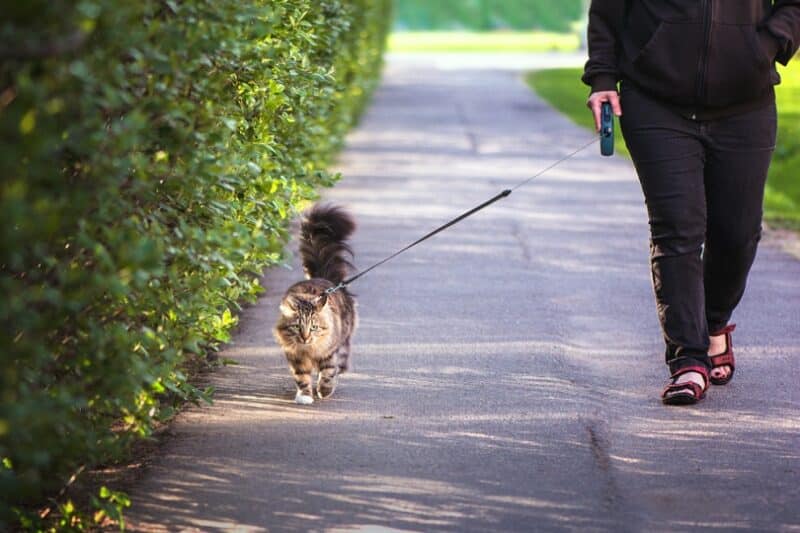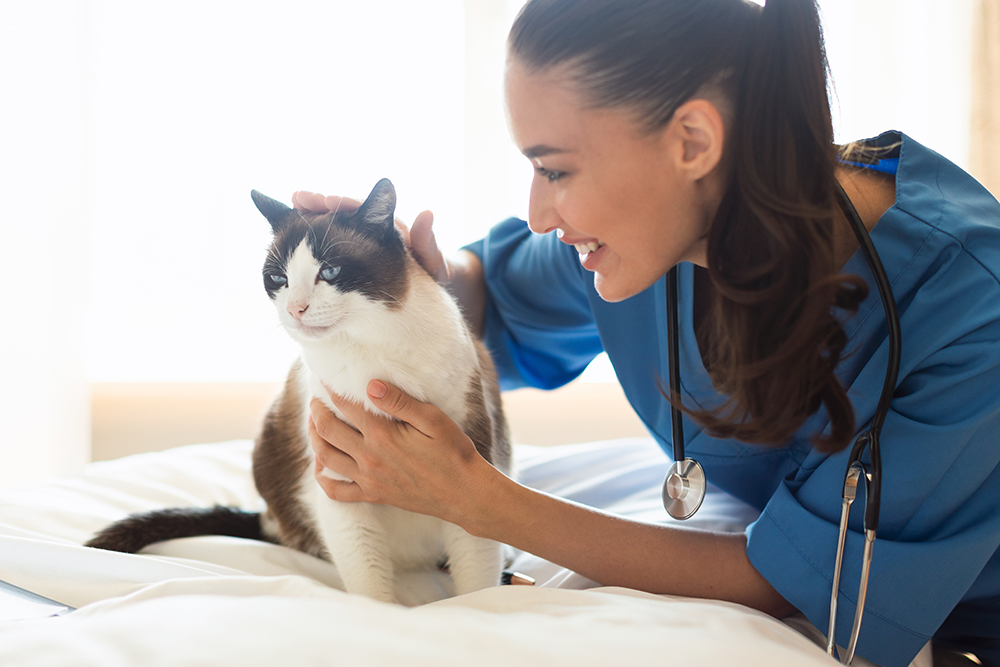Click to Skip Ahead
Can you remember the last time you saw a cat on a harness going for a walk with their owner? We’re willing to bet you’ve likely only seen it a handful of times. Cats don’t need walks in the same way that dogs do, but that doesn’t mean that they can’t learn to enjoy them.
If you’ve ever wondered, “Can you walk a cat outside?” and “Why don’t people walk cats like they do dogs?” you’re going to want to stick around. Today, we will delve deep into the pros and cons of taking your cat for a walk and teach you how to see if your cat is receptive to outdoor exploration.
The 3 Pros of Walking Your Cat
1. Walks Are Enriching
Indoor cats can lack stimulation seeing the same thing day in and day out. This can take a toll on their wellbeing. Spending time outside with you provides them with stimulation and allows them to battle life’s daily monotony.
2. Walks Are a Safe Way to Explore the Outdoors
Taking your kitty for a walk on a leash is much safer than allowing them to explore the outdoors independently. They’ll be less likely to get hit by a car, targeted by predators, or be exposed to something poisonous in your neighborhood. Additionally, your backyard birds and other small wildlife populations won’t be affected, as your kitty will be unable to attack or kill them if they’re with you and on a leash.
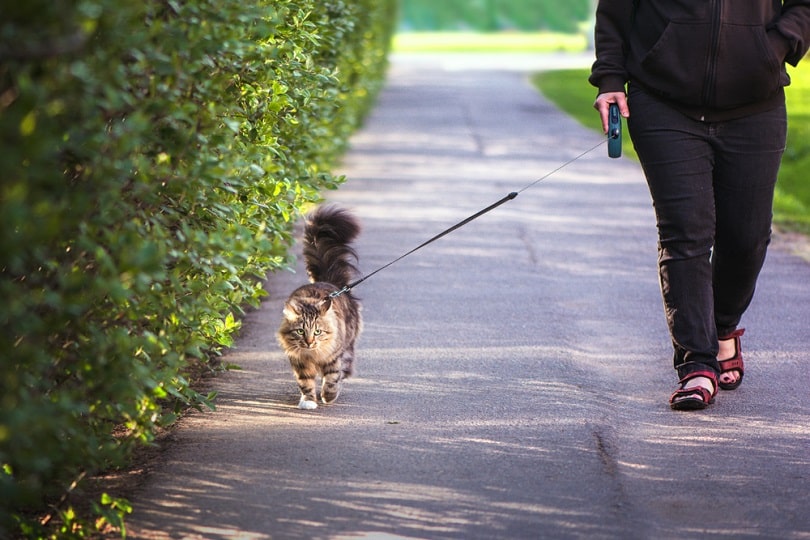
3. Walks Provide Exercise
Indoor cats can get slothful and overweight if they become accustomed to lazing around the house all day. Going for walks provides them with the physical activity they need to achieve better overall health and wellness.
The 4 Cons of Walking Your Cat
1. Not All Cats Like Being Outside
Being outside can be extremely stressful for cats, especially those that have never been out there before. There’s a plethora of new sounds, sights, and smells to take in, all of which can be very overwhelming and stressful for your kitty. Not all cats are going to be outdoor enthusiasts, so respect your cat’s boundaries, and never push them into doing something they don’t want to do.
2. Walks May Exposure Your Cat to Threats
Taking your cat outside for a walk could potentially expose them to threats they wouldn’t usually encounter. This can include things such as exposure to dogs or other predators (e.g., coyotes or birds of prey), fleas, and ticks.
Additionally, if you haven’t purchased a quality harness or leash, there’s a chance your kitty can escape and run away.
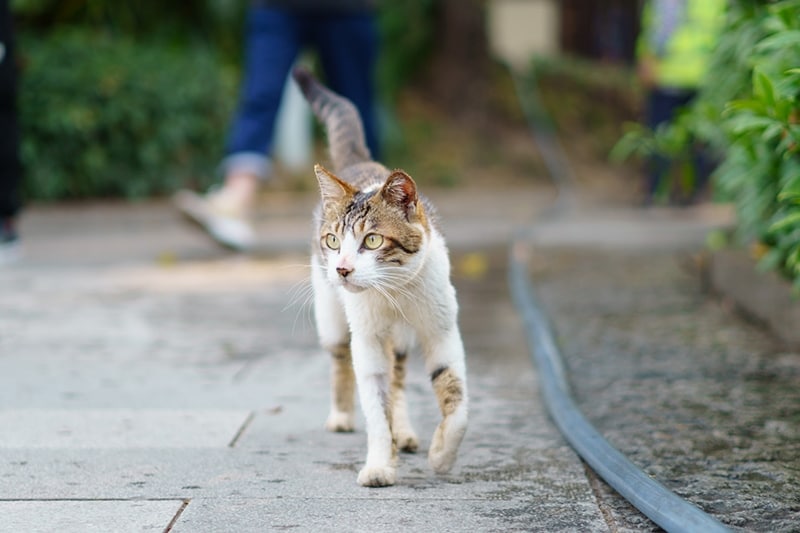
3. Walks May Awaken the Inner Demon
Once your kitty has had a taste of the outdoors, they may become door darters and howlers. They may run from window to window, vocalizing excessively as they try to tell you they want to go back out there. This can get old very fast for you and can add undue stress to your kitty. Positive reinforcement will go a long way in helping break them of their door-dashing and howling tendencies, as well as committing to regular time spent outdoors with your cat.
4. Walks With Cats Aren’t Like Those With Dogs
If you’re excited at the prospect of taking your kitty for a walk, you should know before you set out on your first adventure that walking with cats isn’t anything like walking a dog. Cats are very slow and take a lot of breaks to stop and sniff their surroundings.
Do Cats Need to Be Walked?
Cats don’t need to be walked in the same way that dogs do, as their physical activity requirements can be maintained through indoor exercise. However, some cats seem to enjoy it, so you’ll want to consider your cat’s needs before deciding whether you want to leash and harness train them.
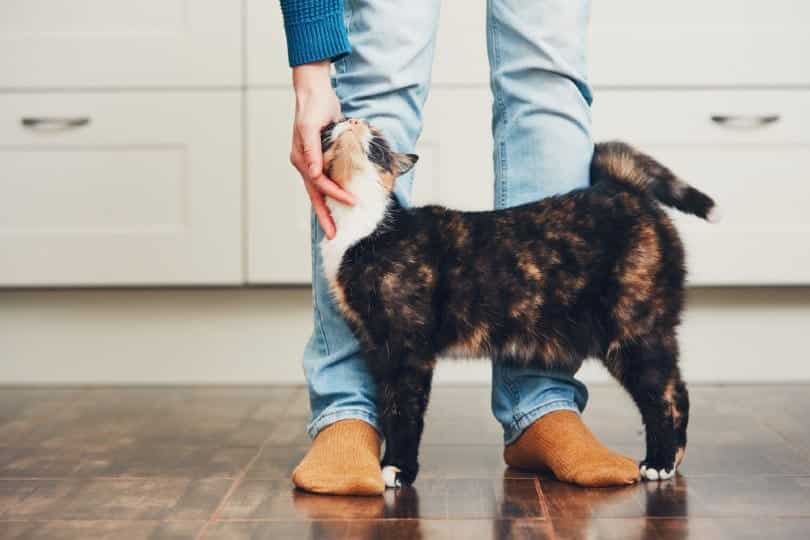
Things to Consider Before Walking Your Kitty
Your Cat’s Personality
Not all cats will enjoy going outside. This is especially true for those who are naturally skittish or anxious. My cat Odin has extreme anxiety that he is medicated for, and I could never imagine trying to put a harness on him, let alone take him outside. It would be cruel and only for my own benefit, not his.
Cats that are bold and outgoing are more good candidates for walks.
Your Walking Path
Choose somewhere quiet and less frequented, at least for your first few walks. A loud walking trail that’s full of other people and dogs will not be a good introduction to walking outdoors for your kitty. You might consider sticking around your backyard the first few times, as it will be harder for your cat to escape from a fenced-in area if they were to wiggle out of their harness.
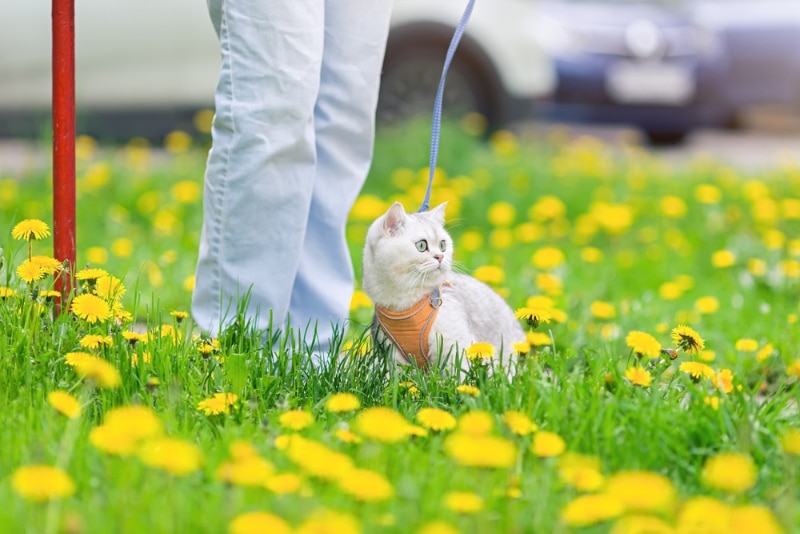
Your Commitment Level
If your cat winds up loving their walk, are you committed to taking them out on subsequent adventures? There’s nothing worse for your kitty than getting a small taste of the great outdoors, only never to get the chance to explore them again. We’re not saying you need to commit to thrice daily walks as you might with a dog, but once weekly is fair.
Are There Alternatives to Taking Cats for Walks?
Some cats may not enjoy going for walks on leashes, but that doesn’t mean that they wouldn’t benefit from some outside time. Try one of these alternatives for giving your kitty some well-deserved time outdoors.
Catios
Cat patios, or catios, are safe and enclosed spaces that bridge the gap for indoor cats. They are typically installed near windows, so you can open your window and allow your kitty to come and go as they please. Catios ultimately protect wildlife from free-roaming cats, give your kitty safe access to the outdoors, and provide stimulation.
Pet Strollers
Pet strollers are another safe alternative to walking your kitty on a leash. You’ll still technically be taking your cat for a walk, except they’ll be safe inside their stroller. This is a good way to get your cat used to the outdoors if you plan on getting them leashed-trained to go for walks eventually. We have a pet stroller, and our tuxedo boy, Arlo, absolutely adores his walks in it. He loves to stand on his hind legs to look out the window but appreciates that he can duck down to hide if he sees a scary dog coming along the path.
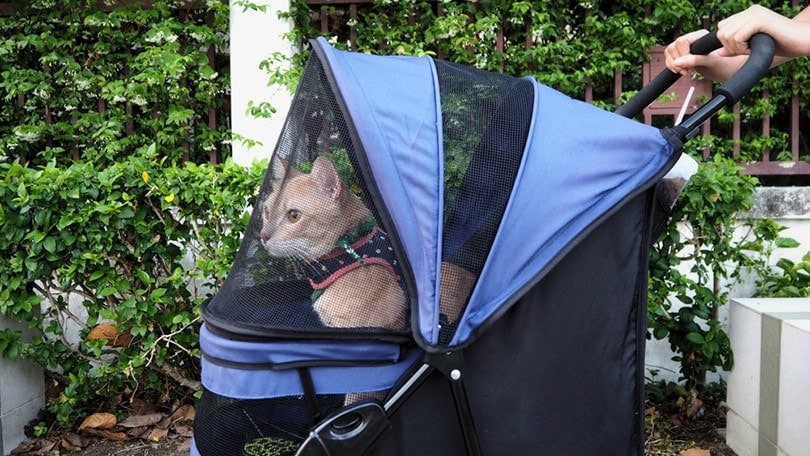
How Can I Take My Cat for a Walk?
Get the Right Equipment
It would be best if you used a harness rather than a collar when walking your cat, as they can easily slip out of collars or inadvertently choke themselves. Additionally, harnesses are more secure and comfortable. To ensure the harness fits properly and isn’t too tight or loose, ensure you can fit two fingers between your kitty and their harness.
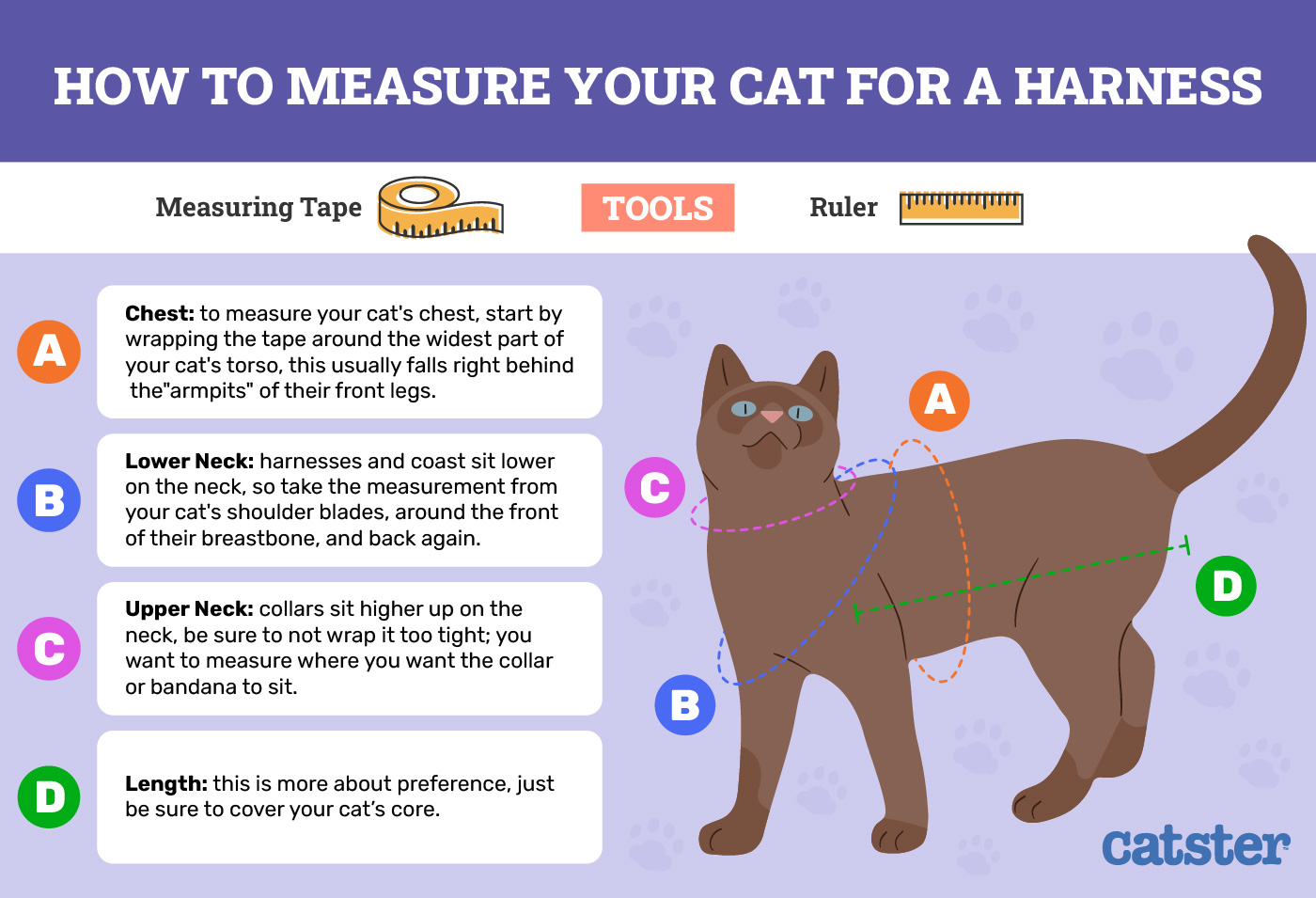
Introduce the Harness at Home
Ensure your cat has had plenty of time to familiarize themselves with the feel of their harness before taking them outside. Put it on them when they’re inside the safety and comfort of their home to get them acclimated to the harness. Don’t be surprised if they freeze and fall over the first few times you put it on them. This is totally normal and doesn’t mean they won’t ever get used to their harness. If they are clearly uncomfortable or agitated, remove the harness, give them treats for trying, and try again another day.
Be Generous With the Treats
Speaking of treats, have plenty on hand when training your kitty to use their harness and leash. Positive reinforcement goes a long way with cats, and they’ll be more open to putting on the harness and going outside if they associate it with yummy rewards.
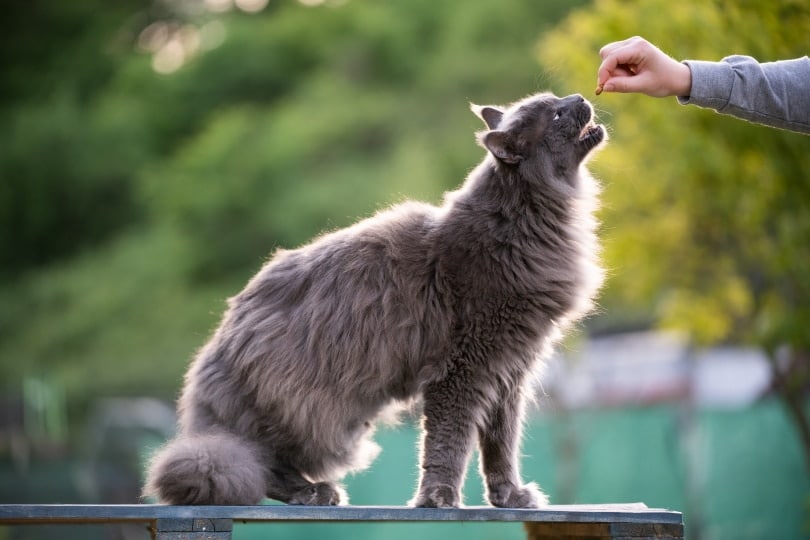
Keep Sessions Short
Once your cat is used to their harness, attach the leash and take them to your backyard. Keep the first few outdoor sessions short so as not to overwhelm them. As soon as they show discomfort or stress, please pick them up and take them inside.
Let Them Take the Lead
Let your cat take the lead when you’re walking with them. You should never pull on the leash or force them to go places they don’t want to. This can create negative associations and make them afraid even to see their harness in the future.
Final Thoughts
Cats can be taken outside for walks, but your success rate will depend entirely on your cat. If yours is skittish or suspicious about new environments or experiences, chances are they won’t take to their harness or even be outside very well.
However, if they’re more outgoing and love spending time in a pet stroller or their catio, they may be more receptive to leashed walks with you, provided you take the time to train them to do so.
Never force your cat into new experiences that they’re not interested in. Not only will coercing your kitty to go for a walk stress them out, but it can also ruin the bond you’ve spent years building. Listen to your pet and know when to stop.
See Also:
Featured Image Credit: Reshetnikov_art, Shutterstock

